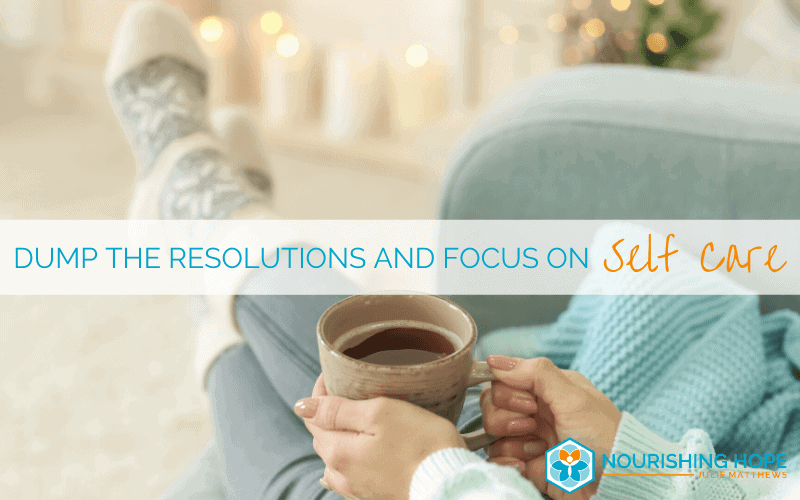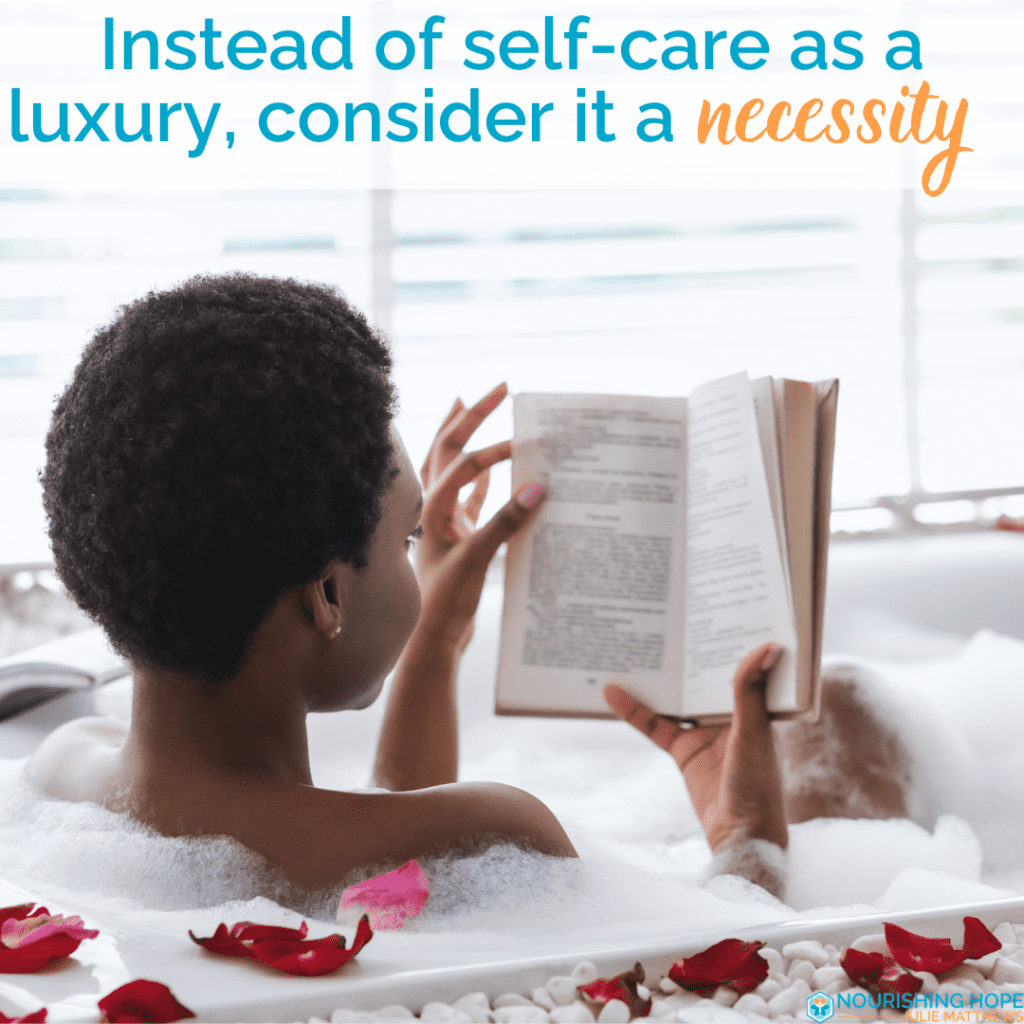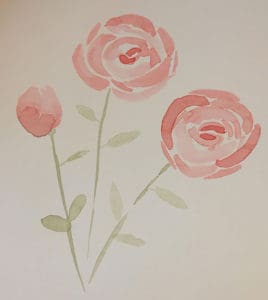
I love the new year…Well, sort of. Let me explain.
I love the opportunity during the new year to reflect on what I want to create.
I dislike the “pressure” of the “New Year’s Resolution.”
It feels so forced. And if you know me, you know I dislike feeling forced to do anything… even if it is “supposed to be” good for me. 😉
So, I’ve made this time something I enjoy. Rather than a list of obligatory New Year’s resolutions, I’ve created my own ritual for the New Year.
What do I do?
I create.
…AND I nurture myself.
Every year I take a couple weeks during the Christmas to New Year period, when it’s slow and quiet, and schedule it for myself. In addition to lots of free time with my daughter and my family…
I make sure I schedule time for myself, usually one week, ALL to myself.
But the amount of time doesn’t matter.
It’s about…
Creativity and self-care.
I love creating… new programs, new handouts, new articles, new presentations, and new webinars…
But I also love creating crafts just for me like wreaths, inspirational signs, and decorations for my home. Right now, my latest creation is making soap.
But I’m also focusing on self-care during this time. Focusing on my physical health and mental health, my emotional and spiritual health. All of it aimed at self-care. Reflecting on new habits/routines I want to create for this year… and right now.
I’ve come to realize that after 20 years of waiting for life to slow down so I could take care of ME that it’s not going to slow down! So I’ve learned, I have to PRIORITIZE ME!
I consider this time a luxury (that I’m grateful for), but it is also a necessity (in order to do what I do).
Sometimes, I feel guilty…
…Taking this much time for myself.
But I’ve learned…
If you want to do big things in the world, you need a lot of energy and vitality, so you need to take care of yourself.
Let’s face it, whether healing your child or helping others, it takes a lot of energy.
We all know the sentiment,
“Put your mask on before assisting others” or
“You cannot pour from an empty cup.”
It’s true.
We need to have energy and capacity to help others. Taking time for ourselves makes us GOOD moms/humans, not selfish ones.
And we need energy and capacity to create.
Instead of self-care as a luxury, consider it a necessity.

Only you can prioritize you.
Appreciate everything you do for yourself.
No act of self-care is too small.
I have a long and growing list of self-care strategies I have used over the years to help me when life gets hard, that I will be sharing with you this year. In fact, self-care for mom and dad is part of my Nourishing Hope for Healing Kids program for parents to help their child with autism.
But it doesn’t matter if you are a parent or not, whether this is personal or professional, self-care is important.
Here are some of my current favorites that I used this week.
De-Stress. Here is a great 6-minute video on reducing stress my acupuncturist just shared with me. I try to do it every day, even if I only do part of it. My favorite one minute exercise starts at minute 3:50.
Breathe. Focus on my breath and the present moment. This is not a small task. It’s a powerful one. It will always be available to you. And for those who want to take it to the next level, my friend and colleague Ari Whitten has a free webinar on using your breath to increase energy and reduce anxiety, I highly recommend checking it out.
Drink water. I bought 2 of these 32 ounce glass water bottles that I fill up at the beginning of the day. I’m reminded to drink it, and I have a good understanding of how much water I’ve had for the day. I love to cut cute vinyl sayings or images using my Cricut machine. Apparently it is all the rage to have cool stickers on your water bottle (or so my daughter Ruby tells me.)
Eat something healthy. As a nutritionist, nourishing myself is a key part of self-care. I focus on boosting the nutritional value of each meal. This week I just added Brazil nuts as a snack for extra selenium during cold/flu season (as Terri Hirning, my friend and colleague, reminded me the other day). Choose anything that’s nourishing for you. Sometimes it’s a soup, other times it’s a bowl of greens for me. There are many choices you can make each day.

Watercolor painting by Julie
Painting. I took up watercolor painting. I tend towards anxiety so I took up coloring a few years ago. I just decided to try coloring with watercolor paints. I love the feeling of the brush. It’s meditative like coloring and there is more ease in the brush strokes. Creative endeavors clear my mind so I can create. It’s meditative, a mindfulness practice.
Dancing or rolling out. I like to add a body centered activity to my day. It gets me out of my head, since nutritional biochemistry is so cerebral, and helps me be more balanced. I love “poi” a form of fire dancing (that can be done without fire). But more recently I’ve just been dancing or even rolling out on a foam roller. My poi teacher, Isa Isaacs taught me this one… to do any body-centered practice every day.
Buy flowers. I love beautiful things. They make me happy. Self-care includes exposing yourself to beauty. I bought three plants and I have to laugh because my favorite is the one in my bathroom. Every time I’m there, I get a little burst of joy. Haha.
Do you have self-care activities you do?
Make a list of ways you can be nourishing yourself. Add to this list and use it to remind yourself of what you can do when you’re in the need of self- care.
I hope you have a chance to create a list of creative endeavors you’d like to accomplish, or begin one right now.
And share them on our blog.
Amazon Disclaimer: Julie Matthews and Nourishing Hope is a participant in the Amazon Services LLC Associates Program, an affiliate advertising program designed to provide a means for sites to earn advertising fees by advertising and linking to Amazon.com.
FTC Disclaimer: Some links may be affiliate links. We may get paid if you buy something or take an action after clicking one of these.




Thank you so much for this personal sharing. It is particularly meaningful for me at this time, feeling the ‘overwhelm’ as never before and realizing that i must stop and plan.
Your ideas and suggestions seem parallel to Dr Saudra Dalton Smith’s work in the field of rest. https://www.restquiz.com/quiz/rest-quiz-test/ I see you’re working on several of these areas and the ideas inspire me.
May you continue your wonderful work in each of the fields of your creativity, nutrition and painting stand out to me.
This is great!
I can totally resonate with your thoughts.
Great
Very much true
Totally agree
I strongly support